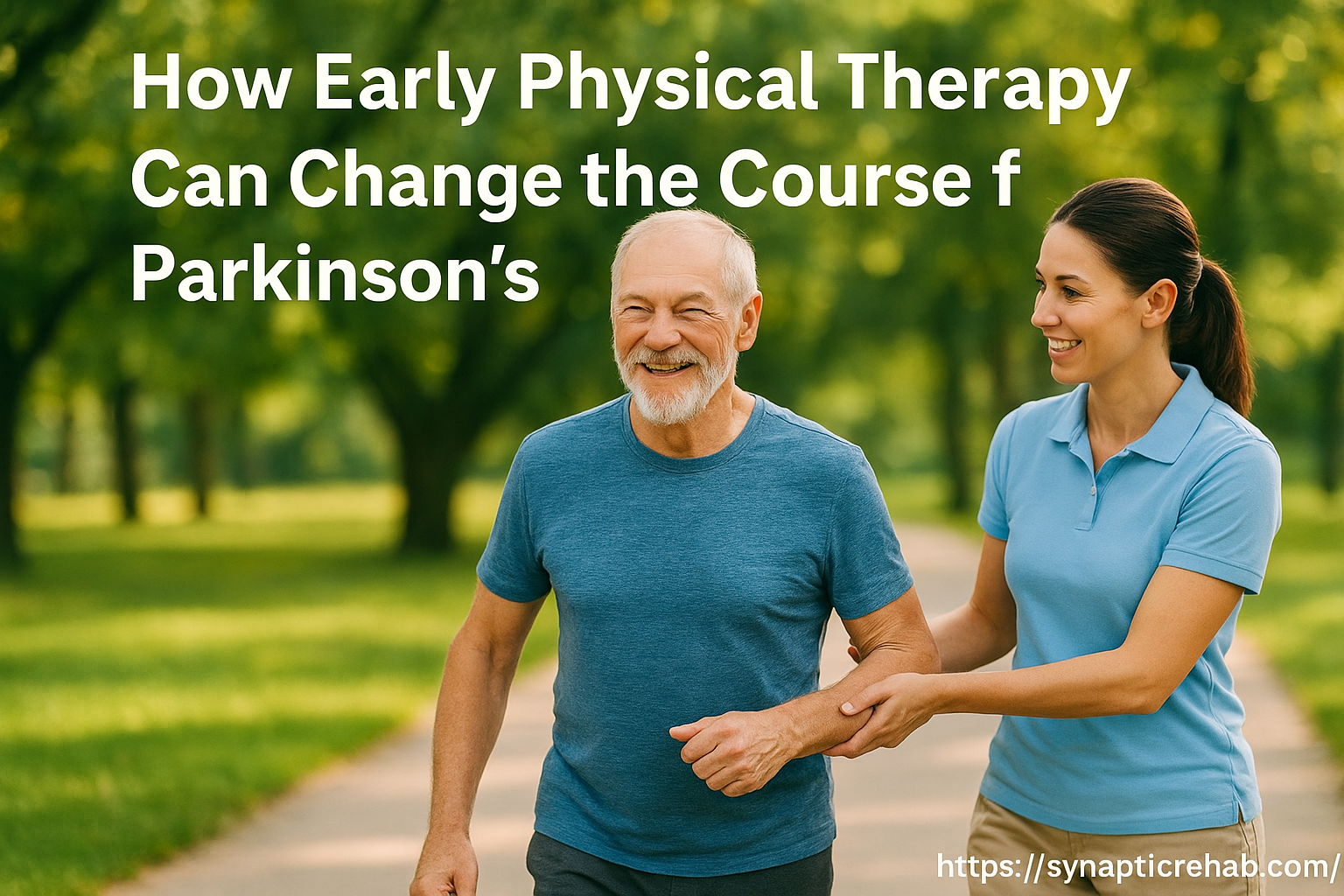How Early Physical Therapy Can Change the Course of Parkinson’s
When someone is diagnosed with Parkinson’s disease, one of the most important questions they can ask is:
“When should I start physical therapy?”
The answer is simple: as early as possible.
Early physical therapy isn’t just about treating symptoms — it’s about slowing progression, preserving independence, and maintaining confidence long before major movement changes occur.
Why Early Action Matters
Parkinson’s disease gradually affects the way your body moves, balances, and reacts. Common early signs include:
- Subtle stiffness in your arms or legs
- Changes in walking pattern or posture
- Smaller handwriting
- Reduced facial expression or voice volume
While medications like levodopa help manage symptoms, they don’t rebuild strength or coordination. That’s where early physical therapy plays a key role.
How Physical Therapy Helps Slow Parkinson’s Progression
1. Builds a Strong Foundation
Starting therapy early helps maintain flexibility, strength, and endurance before significant movement loss occurs.
2. Retrains the Brain
Exercise and movement therapy promote neuroplasticity — the brain’s ability to rewire and create new movement patterns. This helps delay decline in motor skills.
External resource: Read more about neuroplasticity from the Parkinson’s Foundation.
3. Prevents Secondary Problems
Early therapy helps prevent common complications like:
- Joint stiffness
- Muscle weakness
- Poor posture
- Increased fall risk
4. Builds Confidence and Independence
Physical therapy teaches strategies to move safely, conserve energy, and maintain independence in daily life.
What Early Parkinson’s Therapy Looks Like
At Synaptic Rehab, early-stage therapy is proactive and personalized. It may include:
- LSVT BIG® training to improve walking and posture
- Balance and gait retraining to reduce fall risk
- Strength and flexibility exercises to keep muscles active
- Dual-task exercises that combine movement and thinking
- Education for patients and caregivers to manage symptoms at home
Learn more about our Parkinson’s Disease Physical Therapy in Bridgewater, NJ.
The Bottom Line
The earlier you begin physical therapy after diagnosis, the better your long-term outcomes can be.
Even small improvements in strength, balance, and posture can have a lasting impact on quality of life.
Don’t wait until symptoms progress — early therapy is your best defense.
📍 Visit us at 1200 Route 22 East, Suite 4, Bridgewater, NJ 08807
📞 Call: 908-801-6425
💻 Or learn more about our Parkinson’s Wellness Center for ongoing support and education.
Steven Cheung, DPT
Steven is the founder and lead physical therapist at SYNAPTIC Rehabilitation. He earned a BS in Exercise Science Applied Kinesiology from Rutgers University in New Brunswick, NJ and his Doctorate degree from American International College in Springfield, MA. Steven specializes in movement disorders such as Parkinson’s disease and many other neurological disorders. Outside of practicing physical therapy Steven enjoys time with his wife, running, and staying active.

